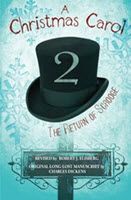|
Today we take a breather from worthy matters of note and go instead for some folderol.
The other day, my friend Patrick Goldstein brought up something he’s noticed when watching old movies and couldn’t figure out. Now, Patrick is an A+ journalist who’s written extensively about movies (and other things entertainment related) in his column for the Los Angeles Times and elsewhere. And if there’s something to find out, he’s the guy who can do it. Or, he can ask me, which is the easier route, especially when he’s not getting paid for it. Or am I. It was that he’d noticed that in a lot of old movies, people seemed to be getting into their cars on the passenger side, and then sliding over. And, as I said, he couldn’t figure out why? I didn’t know either, but made a couple of guesses. One was that because cameras weren’t as maneuverable in the old black-and-white days, it might have been easier to set them up on the sidewalk to capture the action, and just leave them there when it was time to get into the car. Another guess was that maybe there was something about laws getting into cars on the street back in the 1940s that we didn’t know about today. But I didn’t know, that was the best I could do. “Well, maybe you could find out, if you ever decide to,” Patrick said in his clever, subtle way, a journalist trick he must have learned years ago. And me being me, I actually did do a little research on his question about why people in movies get in (and out) of cars on the passenger side. I should add here that after I did all my research and wrote him back all that I’d learned, I brought up a final matter. I asked him, “When you asked me about this and gave me the goofy Goldstein Challenge – did you think that was the end of it, or did you (knowing me) think you’d get a follow-up response?” And he wrote back -- “I confess that I asked you the question because I thought – Of all my friends, who is most likely to try to come up with an answer? -- and I of course thought of you.” The moral here is to be careful who you chose as your friends. Though, in fairness, Patrick appears to have chosen well. On the other hand, when it all starts the day you’re both assigned to the same cabin in summer camp at Camp Nebagamon, “choice” may not always come into play. But for all I know, he may have known as a kid that he would grow up to be a journalista, and this Elisberg kid seems like a good source to cultivate. Which might explain why he followed me to the beloved Northwestern. And then to Los Angeles a couple miles away. Hmmm. Well, just know that where you go to summer camp, it all might lead you down various directions off the beaten path. But I digress. When I wrote Patrick back, the first thing I figured is that he’d be pleased to know that his question wasn’t all that off-beat (not that he’d have cared), but rather a lot of people ask the very same question. And second, for all the time I spent researching, far I haven’t come across a definitive answer. However, there are two most-guessed answers (both of which I’d guessed as possibilities when we spoke). And I also came up with a third possibility that’s fascinating. And I think that the combination among them is most likely the answer. The first two common guesses are – 1) Back then, it was considered safer to enter and leave a car from the passenger side, and with bench seats it was easy just to slide across. Also, apparently some states had laws that required using the passenger seat. 2) Before Steadicams and more portable cameras, it makes it easier to set up a shot (from either side) and let the person get in or out from that side. And since most action starts or finishes from the sidewalk, it makes more sense to set up the camera from the passenger side. Especially if you factor in Reason #1. Now, I have no idea if either are true. Or, as I said, it’s maybe a combination of the two. But the third explanation I came up with was fascinating, and (given that it appears to be based on physical reality) may be a notable factor. A person wrote that – “Lots of cars and trucks in the 50s and prior did not have door locks on the driver’s side so you had no choice but to get in from the passenger side. For instance, my ‘52 truck doesn’t have a key on the driver’s side. It was done because it was deemed saver to get in that way.” Now, of course, I had no way to know if this was true or not, but it sounded weird. Though the guy said his own, old truck had no key for the driver’s side door. But I kept reading, and someone else did some research and replied – “I had no recollection of this situation, so I decided to page through one of my reference books. And, I found that…to a certain extent…you are correct! “Make by make, here is what I found regarding when driver-side door locks were added to cars: “Chrysler & DeSoto–1941 Dodge & Plymouth–1942 Ford & Mercury–1941 General Motors–It appears that all GM cars had driver-side door locks by 1940–possibly earlier Hudson–1947 Kaiser-Frazer–1949 Nash–1946 Packard–1947 Studebaker–1947” Which I find absolutely fascinating. So, it’s possible (indeed from this, seems likely) that in the ‘30s and early – but even late – ‘40s, people could not get in a car on the drivers side! If so (and it certainly seems so) it may be that, since this was the reality, when you add the safety factor, and also some state laws, and bench seats, and also add the occasional possibility of setting up a camera – it may be that it just stayed the tradition for a while to get in a car on the passenger side, even if you didn’t have to. And eventually, as it became common for all cars and trucks to have door locks on the drive side, and bucket seats were added, and more portable cameras, the tradition (for movie making) faded out. Who knows? But assuming that that physical reality of driver-side door locks is real (which is appears to be), it’s hard to see that not being a huge factor for a while. And ultimately, my feeling about most things is that there’s rarely One Reason for them occurring, and it’s usually a few explanations. So, that mix of possibilities might be what makes the most sense, rather than One Reason. But “no driver-side door locks” is intriguing, and goes to another comment I made when Patrick and I talked – that I wondered if it was related to something in the 30s and 40s that we just don’t know about today… This all seemed to satisfy Patrick’s curiosity – not necessarily as the definitive answer, but something that was at least worth sending me off into rabbit holes and coming up with something at least reasonable. Which is why I have long-hold the position here at Elisberg Industries, Vice-President of minutiae, arcana and guesses.
0 Comments
Leave a Reply. |
AuthorRobert J. Elisberg is a political commentator, screenwriter, novelist, tech writer and also some other things that I just tend to keep forgetting. Feedspot Badge of Honor
Archives
June 2024
Categories
All
|
|
© Copyright Robert J. Elisberg 2024
|






 RSS Feed
RSS Feed